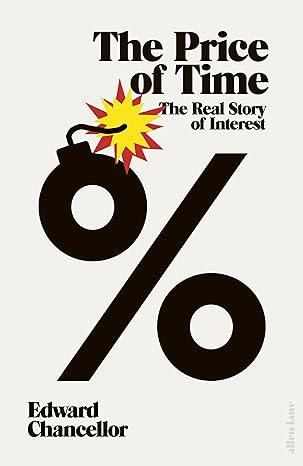Raising interest in wine
What’s the story behind all these English producers that are up for sale?
Edward Chancellor is a remarkably prescient journalist and historian. His 2005 book Crunch time for Credit? predicted the 2007 credit crunch. The policy put in place by central banks and governments in reaction to the resulting financial crisis, zero or near zero interest rates, is the subject of Chancellor’s 2022 book, The Price of Time.
I know, it sounds a bit dry but it’s actually a gripping read that explains much of the problems Britain especially faces today. Low interest rates were great for the City as Chancellor explained in an interview: “when interest rates go down you do more deals. Takeovers and private equity boom in time of low interest. It swells the size of the financial sector.” But they’re terrible for savers or those without assets i.e. the young. The difficulty of getting a return on bonds or money in the bank led to what Chancellor calls the “everything bubble”. Think of the rocketing price of rare wines and whiskies, the booming house market and manias like crypto currencies and NFTs… and English wine*. There was a lot of money sloshing around in the 10s looking for a return and where better to put it than in a vineyard - especially as most City types love a good bottle of wine.
Now the good times (for some) are over. Inflation caused by Covid lockdowns, the energy shock of the war in Ukraine and other factors, led to inflation which meant central backs finally had to put up interest rates. Money is now expensive but expanding sparkling wine producers still need lots of it; hence we’re seeing all these vineyards up for sale.
In April last year a story broke that Rathfinny was looking for investment. There was a rumour that the business was up for sale though owner Mark Driver assured me this wasn’t the case. He commented: "We have no plans to sell the business, and the Driver family remains committed to establishing one of the world’s most admired sparkling wine brands." In November Hambledon in Hampshire, England’s oldest vineyard, was acquired by Berry Bros.& Rudd and the Symington family from Oporto. Then there was a double whammy as England’s largest producer Chapel Down said it needed investment and was potentially up for sale, and now this week Lord Ashcroft has announced that he is looking to sell his majority stake in Gusbourne in Kent.
Chapel Down is something of an outlier here in that it’s profitable whereas Gusbourne and Rathfinny aren’t. In fact, most English wineries are not profitable, the owners have invested expecting profits in the long term. Looking through the accounts of wineries on Companies House makes fascinating and worrying reading. Many are technically insolvent, losing money and a creditor or bank calling in its investment away from going bust.
This wasn’t so much of a problem when money was cheap. Now we’re likely to see far more vineyards coming on the market in future. According to Stephen Skelton: “I would say that a lot of vineyards would sell for the right price as that’s their only exit strategy. Many owners have grown up kids who have their own careers and don’t want to get involved with daddy’s (or mummy’s) loss making business!”
When I handed in my book Vines in a Cold Climate (still available from all good bookshops) in January 2023, the industry looked buoyant, especially with the superb 2022 vintage. If it came out this year, it wouldn’t paint such a rosy picture. On the surface, it all looks hunky dory. Earlier this month the industry body WineGB issued a cheery statement last week looking at how the English wine industry is booming at the moment. Production is up 77% and the number of vineyards in England and Wales has surpassed 1,000 for the first time. All very exciting. But sales were only up 10% in the past year - a big problem with production increasing at the rate that it’s going.
2023 was a bumper harvest in England which most news sources reported breathlessly as all part of the rude health story of the industry. But talk to growers and producers and off-the-record the picture isn’t quite so healthy. Firstly there were mutterings that the quality wasn’t so high, ‘a sparkling wine vintage’, some referred to it as. Even more worrying there were stories about grapes being left on the vine to rot because there just wasn’t the demand.
Production of English wine is increasing at a time of falling demand (which might be permanent as the younger generation is drinking less - damn them), a struggling economy and difficulty of raising investment. We’re likely to see a lot more vineyards up for sale, consolidation and I would not be surprised if a French company acquired one of the big boys. Whatever happens, it’s going to be interesting.
*This is a joke. I don’t think English wine is a mania like NFTs and cryptocurrencies - I thought people would get this as the comparison is obviously absurd but hey, the internet.





Which English wines are good?
This is a great article, particularly the call out on lack of profitability which a lot of people don’t “see”.